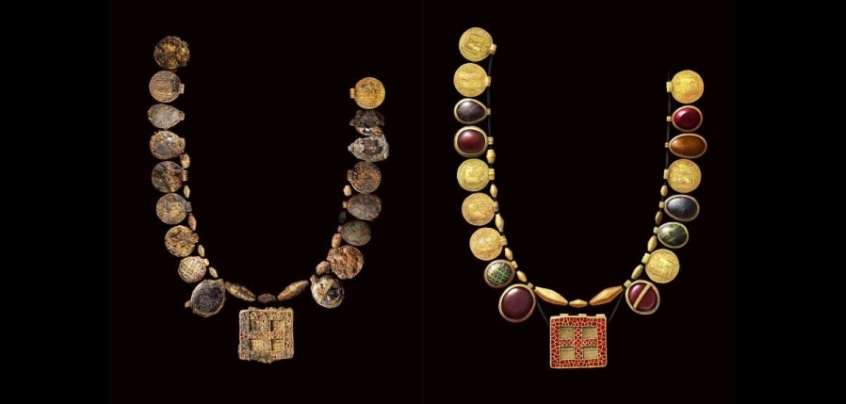
A remarkable "once-in-a-lifetime" discovery of a gold and gemstone necklace in a Northamptonshire pit may have belonged to an early female Christian leader, say British archaeologists.
The 1,300-year-old necklace is made up of a "staggering" number of pendants. At the centre is a large rectangular pendant made of red garnets and gold, and featuring a cross motif.
It was found by Museum of London Archaeology (MOLA) at what is being called an "internationally important" burial site.
The burial dates to 630-670 AD and the necklace is "the most ornate of its kind ever found".
While similar pendant necklaces have been discovered at other female burials from this period, MOLA said this particular one had an "incredible variety" of pendants.
"When the first glints of gold started to emerge from the soil we knew this was something significant. However, we didn't quite realise how special this was going to be," said MOLA Site Supervisor, Levente-Bence Balázs.
The necklace is was one of many incredible items belonging to the 'Harpole Treasure' discovered at the site. Other items include gold Roman coins, and gold-set semi-precious stones and decorated glass pendants.
The most exciting discovery, MOLA said, was a large ornate cross inset with garnets and decorated with smaller crosses at the end of each arm.
"The sheer size of the cross suggests the woman buried here may have been an early Christian leader," said MOLA.
The only human remains discovered at the site were fragments of tooth enamel which the museum will analyse further.
"We currently think that it is almost certainly a female burial because similar necklaces and extravagant burials are almost exclusively found in female burials in this period," MOLA said.
"The combination of the incredible necklace and other grave goods means this is one of the most spectacular female Early Medieval burials ever discovered in the UK.
"We are at a very early stage of the conservation and analysis of this discovery, so there is a lot of work still to do. We hope to identify the organic material that has survived, and learn more about the cross and necklace."













